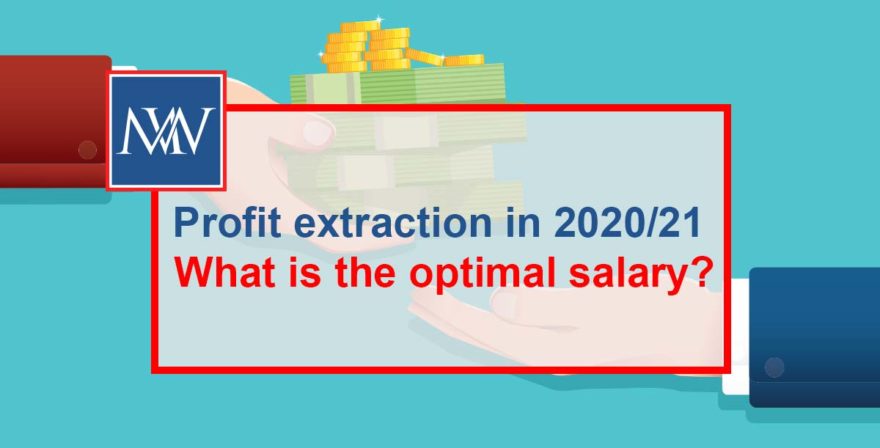
Profit Extraction in 2020/21 – What is the Optimal Salary?
A popular tax-efficient profit extraction strategy used by personal and family companies is to take a small salary and extract further profits as dividends. Where this approach is adopted, the starting point is to determine the optimal salary. While this will depend on personal circumstances and there is no excuse for not doing the sums, there are some general guidelines.
Where the director does not have the requisite 35 qualifying years to provide access to the full single-tier state pension paying a salary at least equal to the lower earnings limit for Class 1 National Insurance purposes (set at £120 per week; £520 per month and £6,240 per year) will ensure that the year is a qualifying one.
The maximum salary that can be paid free of tax and National Insurance
The first question to consider is what is the maximum salary that can be paid free of income tax and employer’s and employee’s National Insurance. For 2020/21, the key numbers are:
- the personal allowance – set at £12,500;
- the primary threshold – set at £9,500 per year; and
- the secondary threshold –set at £8,788 per year.
Assuming the personal allowance has not been used elsewhere, the maximum salary that can be paid without triggering a tax or National Insurance liability is one equal to the secondary threshold of £8,788.
However, if the director is under 21, there is no secondary Class 1 liability until earnings exceed £50,000 and in this scenario, the maximum salary that can be paid free of tax and National Insurance is one equal to the primary threshold of £9,500 per month. The same is true where the director is over 21 but the employment allowance extinguishes any secondary Class 1 liability.
Is a higher salary tax-efficient?
Salary payments and any associated employer’s Class 1 National Insurance contributions are deductible for corporation tax purposes and there will, therefore, be an associated 19% reduction in the corporation tax bill. Where paying a higher salary triggers a National Insurance liability, this will be worth paying if it is more than offset by the corporation tax reduction. The sums differ depending on whether the employment allowance is available.
Employment allowance unavailable
In a personal company scenario, it is unlikely that the employment allowance is available as companies, where the sole employee is also a director, as would be usual in a personal company, do not qualify.
Where this is the case, assuming the director is over 21, a salary in excess of £8,744 will attract a secondary Class1 National Insurance liability. However, there is no primary Class 1 liability until the salary reaches the higher primary threshold, set at £9,500 for 2020/21. At 13.8%, the rate of employer’s National Insurance is less than the corporation tax rate – the corporation tax saving on the salary and employer’s National Insurance of £163 (19% (£756 x 1.138)) is more than the employer’s National Insurance on the additional salary of £104 (13.8% of £756), meaning it is tax efficient to pay a salary of £9,500. However, the employer’s NIC will need to be paid over to HMRC, incurring admin costs.
However, beyond this level, the combined effect of employer’s and employee’s National Insurance outweighs any corporation tax saving. The optimal salary, in this case, is, therefore, £9,500 a year.
Employment allowance available
In a family company scenario, the employment allowance may be available, making it possible to pay a salary of £9,500 free of tax and National Insurance. Paying an additional £3,000 to bring the salary up to the level of the personal allowance will trigger an employee Class 1 liability of £360 (12% of £3,000). However, the additional salary of £3,000 will reduce the corporation tax bill by £570 (19% of £3,000), making the additional salary worthwhile. However, once income tax at 20% is brought into the mix, this is no longer the case, meaning the optimal salary is one equal to the personal allowance of £12,500.
Switch to dividends
Once the optimal salary has been paid, it is tax-efficient to extract further profits as dividends.
For more information on Optimal Salary, Book a Free Consultation
Need Accountancy Support?
For information on bespoke training, or if you have any other questions for Makesworth Accountant, please fill in your details below
















 151
151